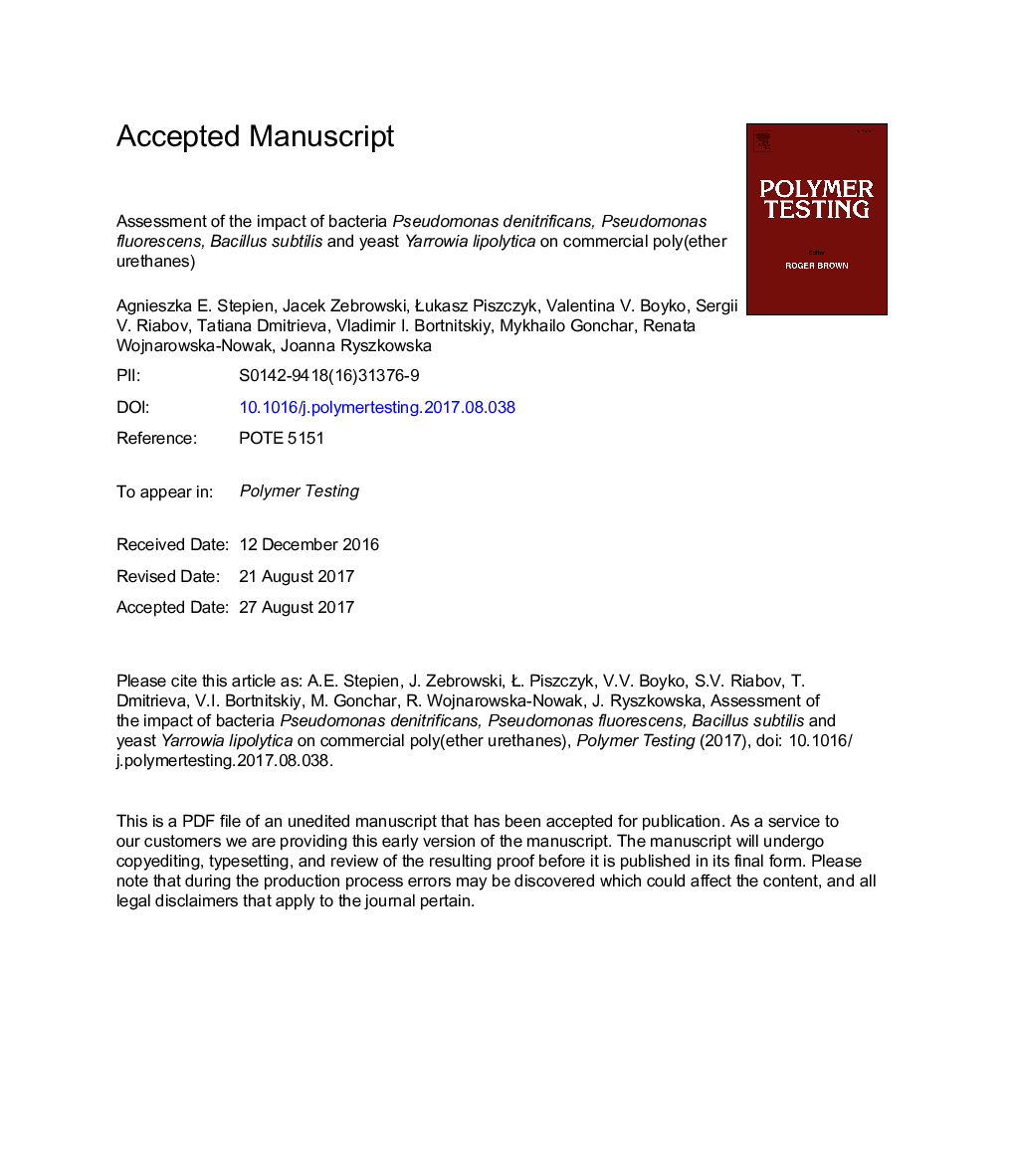| Article ID | Journal | Published Year | Pages | File Type |
|---|---|---|---|---|
| 5205285 | Polymer Testing | 2017 | 22 Pages |
Abstract
The assessment of the impact of the bacteria Pseudomonas denitrificans, Pseudomonas fluorescens, Bacillus subtilis and yeast Yarrowia lipolytica on commercial poly(ether urethanes) Tecoflex® and Tecothane® is presented. The polyurethane samples were incubated with pure cultures of the microorganisms at 30 °C for five months. The changes in the chemical structure of the polymers were evaluated using loss of weight and contact angle measurements, infrared spectroscopy (ATR-FTIR), mass spectrometry (Py-MS), differential scanning calorimetry (DSC) and the thermogravimetric analysis (TG). In addition, scanning electron microscopy (SEM) and atomic force microscopy (AFM) were applied for imaging changes in surface morphology of the poly(ether urethanes). Comparative analysis of these polyurethane features before and after incubation with the microorganism cultures showed that Tecoflex® was less stable than Tecothane®. This can be explained by the presence of aromatic rings within the diphenylmethane diisocyanate group in the chemical structure of the latter. Bacterial strains of Bacillus subtilis and Pseudomonas fluorescens showed a much more prominent destructive effect compared to the strain of yeast Y. lipolytica.
Keywords
Related Topics
Physical Sciences and Engineering
Chemistry
Organic Chemistry
Authors
Agnieszka E. Stepien, Jacek Zebrowski, Åukasz Piszczyk, Valentina V. Boyko, Sergii V. Riabov, Tatiana Dmitrieva, Vladimir I. Bortnitskiy, Mykhailo Gonchar, Renata Wojnarowska-Nowak, Joanna Ryszkowska,
